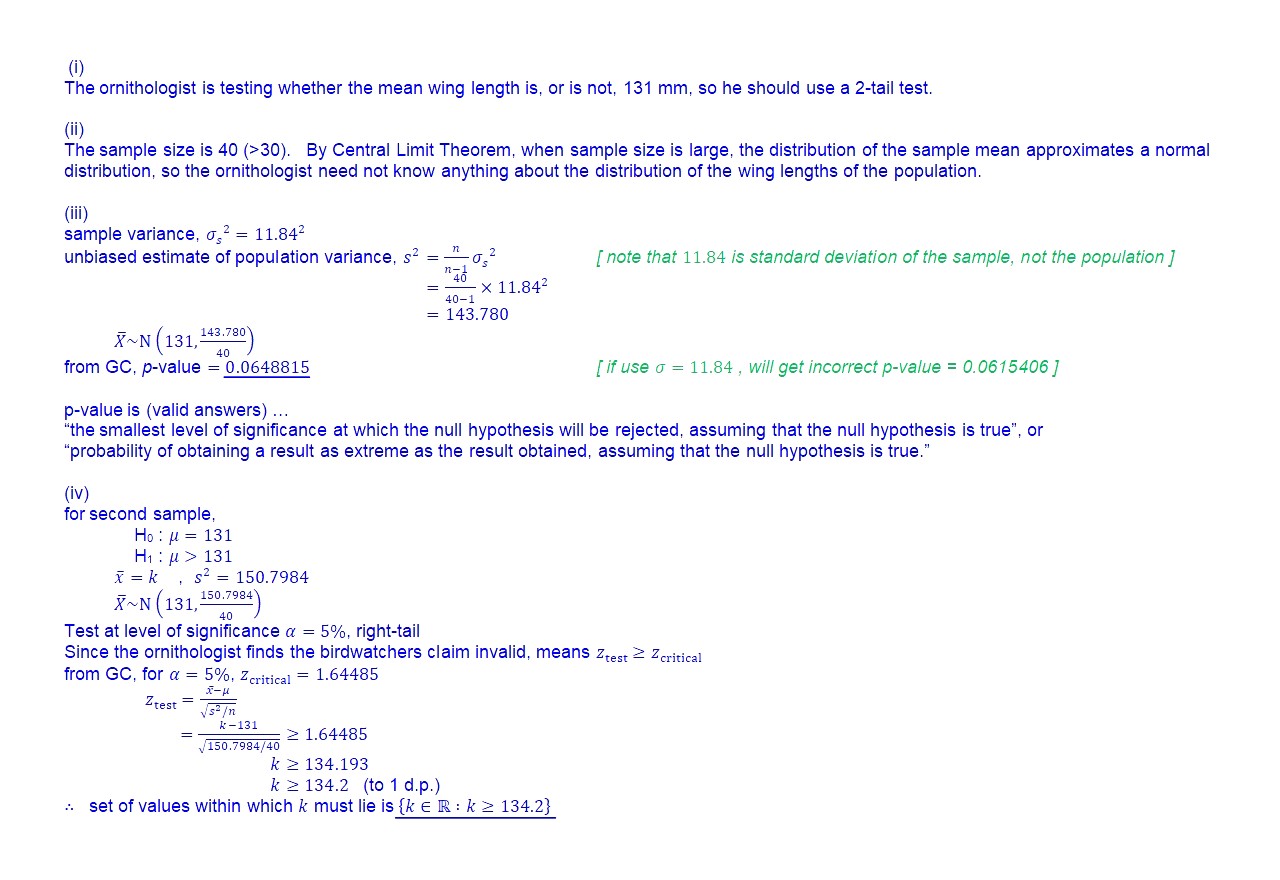Boy Mow Chau's answer to Audrey's Junior College 1 H1 Maths Singapore question.
done
{{ upvoteCount }} Upvotes
clear
{{ downvoteCount * -1 }} Downvotes
(iii) Important note! The standard deviation given in the question is the standard deviation of the sample of 40 birds. Need to use population variance, or unbiased estimate of population variance, for your z-test.
(iv) You have accidently cropped out the last statement of the original question. The last statement is ...
"Find the set of values within which k must lie. Leave your answer correct to 1 decimal place."
(iv) You have accidently cropped out the last statement of the original question. The last statement is ...
"Find the set of values within which k must lie. Leave your answer correct to 1 decimal place."
Date Posted:
2 years ago
For part (iii), the definition of p-value given in the solution are more "general" definitions. Since the question says "state the meaning of this p-value in context", we need to follow the wordings from the question, so a more suitable answer may be ...
"In the context of this question, p-value of 0.06488 means that there is 6.488% probability of obtaining a mean wing length as extreme as 127.5 mm, assuming that the mean wing length is 131 mm."
"In the context of this question, p-value of 0.06488 means that there is 6.488% probability of obtaining a mean wing length as extreme as 127.5 mm, assuming that the mean wing length is 131 mm."
Thank you so much
may I ask why for (iv) H1 is M > 131 when the question stated at most 131? I thought it should be less than or equal to 131?
The birdwatcher's view that the mean wing length is "at most" 131mm, means he feels that the mean wing length is "less than, OR equal," to 131mm. The "OR equal" makes this the null hypothesis.
The alternate hypothesis would be the opposite, that is, the mean wing length is greater than 131mm.
Remember that for any hypothesis test, we always assume that the null hypothesis is true, unless there is strong evidence otherwise.
An observed mean wing length of slightly more than 131mm, could have just happened just by chance, and does not provide strong enough evidence to reject the birdwatcher's claim that mean length is at most 131mm.
For the ornithologist to have found the birdwatcher's claim invalid, he must have an observed mean wing length that is far greater than 131mm, and is so extreme that it is quite unlikely to occur just by chance (in this case less than 5% probability).
The alternate hypothesis would be the opposite, that is, the mean wing length is greater than 131mm.
Remember that for any hypothesis test, we always assume that the null hypothesis is true, unless there is strong evidence otherwise.
An observed mean wing length of slightly more than 131mm, could have just happened just by chance, and does not provide strong enough evidence to reject the birdwatcher's claim that mean length is at most 131mm.
For the ornithologist to have found the birdwatcher's claim invalid, he must have an observed mean wing length that is far greater than 131mm, and is so extreme that it is quite unlikely to occur just by chance (in this case less than 5% probability).



